The Frick Revives 18th-Century Frescoes Destroyed During World War II
A new exhibition unites preparatory paintings, drawings and photographs of Tiepolo’s Palazzo Archinto frescoes
Over the course of World War II, some 65 percent of Milan’s historic monuments were damaged or completely destroyed.
The Palazzo Archinto's treasures were among the causalities. While the majority of the building’s structure survived intact, on August 13, 1943, Allied bombing razed its interior, destroying a series of ceiling frescoes by Venetian painter Giambattista Tiepolo between 1730 and 1731.
A Frick Collection show, on view through Sunday, July 14, does not attempt to recreate the frescoes. Its aim, rather, is to reveal all that remains of the five sumptuous rooms—mainly preparatory paintings, drawings, and black-and-white photographs—and, in doing so, testify to the enormity of the loss.
“The show is ... meant to celebrate these frescoes, but also make us realize how fragile these works of art are,” curator Xavier F. Salomon tells the NTD television network’s Penny Zhou. “Things can be destroyed very easily. And we have very little evidence of how it looks even though it was destroyed as recent[ly] as 1943.”
According to a press release, Tiepolo in Milan: The Lost Frescoes of Palazzo Archinto features 50 objects related to the paintings (a cycle of five works titled “Triumph of the Arts and Sciences,” “Perseus and Andromeda,” “Nobility,” “Juno, Venus, and Fortune,” and “Apollo and Phaëton”): among others, five surviving preparatory paintings and drawings, complementary prints, books of illustrations, and vintage photographs of the palace taken before and after the 1943 bombing.
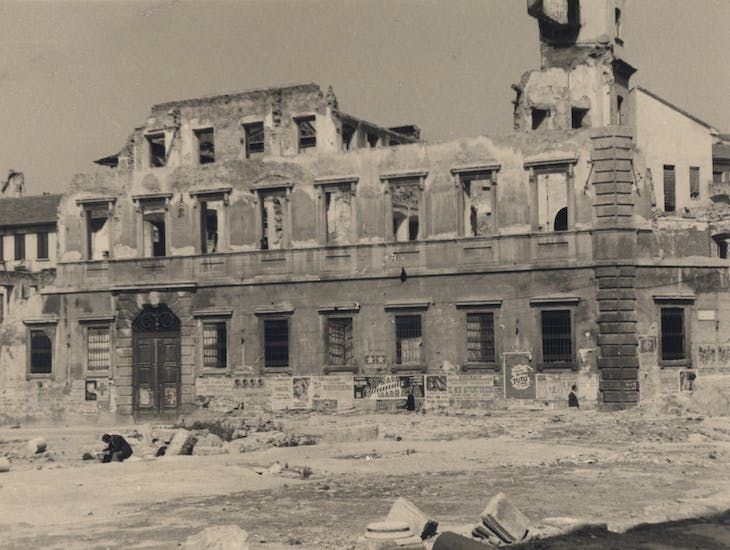
As Jason Farago writes for The New York Times, two of the show’s most striking inclusions are modellos, or painted sketches made for a patron’s approval, of “Triumph of the Arts and Sciences” and “Perseus and Andromeda.” (A third modello for “Apollo and Phaëton” is on loan from the Los Angeles County Museum of Art.)
The first, on loan from Portugal’s national gallery, represents the largest of Tiepolo’s five frescoes—a scene inhabited by the allegorical figures of Architecture, Painting, Sculpture, Music and Mathematics, as well as the classical gods Apollo and Minerva. Pen drawings crafted as studies for the work’s figurative groups and individual characters are also on view. Per the Frick’s online Tiepolo portal, the modello differs from the fresco, as captured by pre-war photographs, in several ways: The figures in the final work are repositioned in relation to the landscape’s architecture, or quadratura, and two cherubic putti seen at the bottom of the sketch are omitted.
Despite the “Triumph” scene’s size advantage, Farago deems the “Perseus and Andromeda” modello “most moving.” Purchased by the Frick’s founder, Henry Clay Frick, in 1916, the preparatory sketch and its accompanying fresco were likely commissioned by Tiepolo’s patron, Count Carlo Archinto, to commemorate his son Filippo’s wedding to Giulia Borromeo. Rather than emphasizing the mythological hero’s actions, the painter chose to spotlight the classical couple’s first moments together. As Farago observes, “Their marriage”—and, by comparison, Filippo and Giulia’s—“would be written in the sky twice over: first by the gods, who turned them into constellations, and then by the artist, in a fresco meant to endure just as long.”
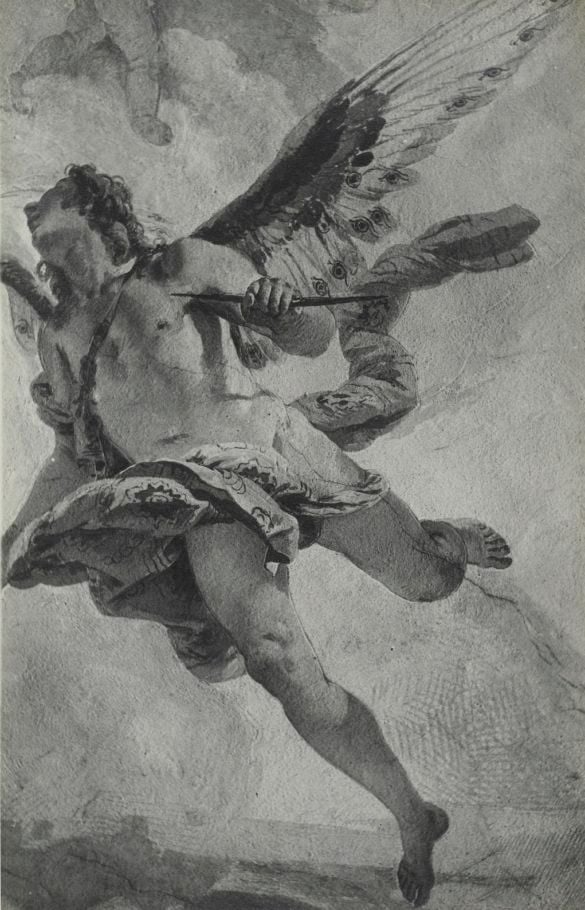
According to La Voce di New York’s Maria Lisella, Count Archinto was a prominent Milanese intellectual known for his interest in philosophy, mathematics and science. In addition to commissioning the Tiepolo frescoes, which stood alongside three painted by a more conservative artist, Vittorio Maria Bigari, Archinto supported a publishing house based out of his palazzo’s library and collected works of art by such luminaries as Titian and Raphael. The count’s home, Palazzo Archinto, remained in the family until 1825.
As the Magazine Antiques explains, the Milanese frescoes were Tiepolo’s first major commission outside of Venice and its mainland territories. Painted when the artist was in his thirties, the monumental works prefaced Tiepolo’s later Grand Mannerist creations in such far-flung locales as Bavaria and Spain.
Today, the Frick notes, all that survives of the legendary painter’s frescoes is a single architectural fragment depicting a mutilated figure from the “Triumph of the Arts and Sciences” scene.
Tiepolo in Milan: The Lost Frescoes of Palazzo Archinto is on view at the Frick Collection through July 14.
/https://tf-cmsv2-smithsonianmag-media.s3.amazonaws.com/accounts/headshot/mellon.png)
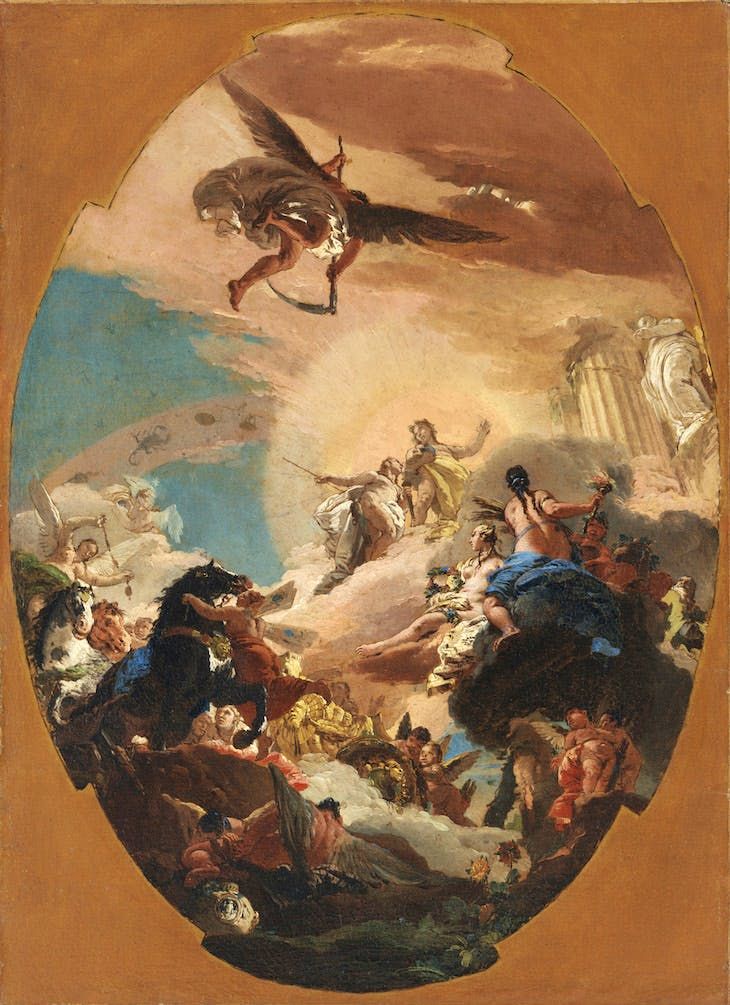
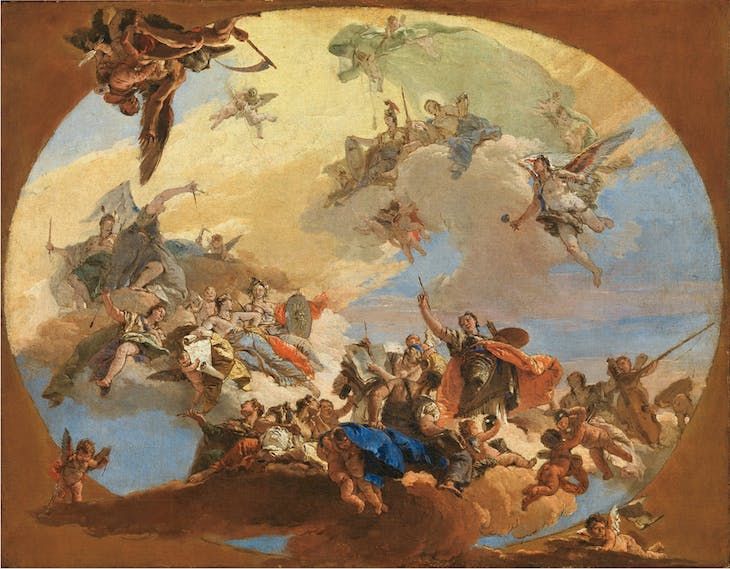
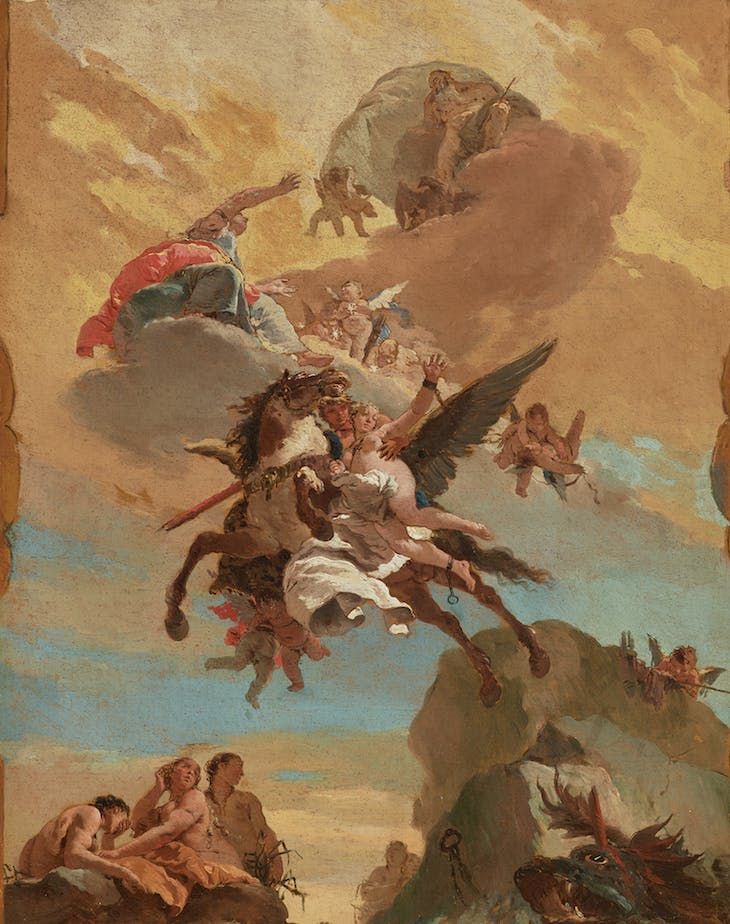
/https://tf-cmsv2-smithsonianmag-media.s3.amazonaws.com/accounts/headshot/mellon.png)